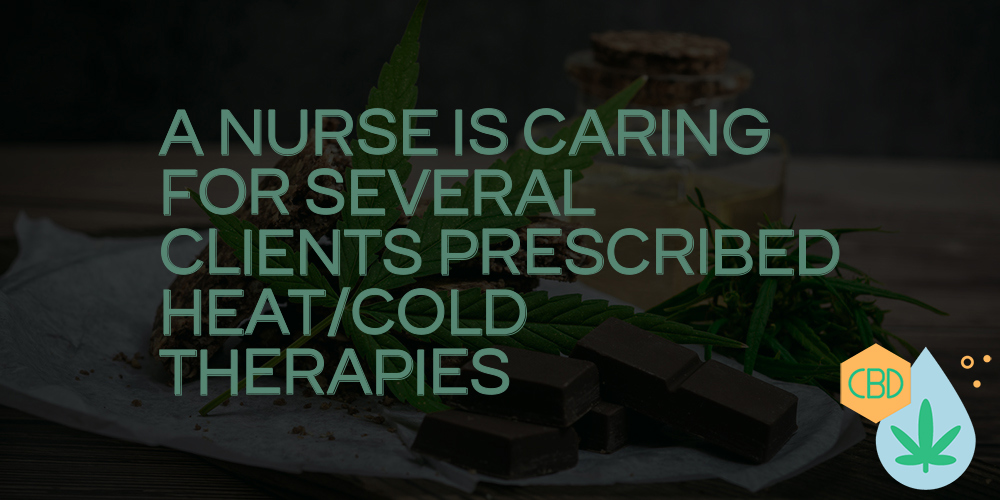Nurses play an important role in safeguarding the well-being of various customers when delivering care. Heat and cold therapies are one part of patient care that nurses frequently use. These therapies, which include applying heat or cold to particular parts of the body, have been shown to be highly successful in easing pain, lowering inflammation, and promoting healing. In this post, we will look at how nurses use heat and cold therapy and the benefits they provide to their patients. Understanding the principles and practices underlying these treatments allows nurses to unlock the potential for better client comfort and recovery.

A Comprehensive Guide for Nurses on Effective Heat and Cold Therapies
Heat and cold therapies are commonly utilized in medical settings to provide relief and promote recovery for a variety of diseases. It is critical for a nurse to have a thorough understanding of these therapies in order to effectively give them to patients. In this guide, we will look at the benefits, indications, and best practices for applying heat and cold therapies, giving nurses the knowledge they need to give the best care possible.
Heat treatment, also known as thermotherapy, entails applying heat to the body in order to enhance blood flow, relax muscles, and relieve pain. It is frequently used to treat muscle strains, arthritis, and menstrual cramps. Heat can be applied in a variety of ways, such as hot packs, heated towels, or warm water baths. When employing heat therapy, it is critical to ensure that the temperature is acceptable for the patient and does not create burns or discomfort. Furthermore, heat therapy should not be used on open wounds, swollen areas, or people with reduced feeling or circulation.
Cold treatment, also known as cryotherapy, is the application of cold to reduce inflammation, numb pain, and lower blood flow to a specific location. It is frequently used to treat acute injuries such sprains, strains, and post-surgical edema. Ice packs, cold compresses, and cold water baths can all be used to apply cold. It is critical to protect the skin from direct contact with the cold source when using cold therapy to avoid frostbite or skin injury. Cold therapy should also be avoided in patients with circulation problems or sensory impairment.
Personalized Heat/Cold Therapies: Improving Patient Comfort and Recovery
Heat and cold therapies have long been used in hospitals to relieve pain, reduce inflammation, and promote recovery. However, recent technological advances have enabled the development of personalized heat/cold therapy that can significantly improve patient comfort and recovery outcomes. These therapies are intended to give precise and controlled temperature regulation, resulting in maximal therapeutic effects while causing no discomfort or injury to the patient.
One of the most significant benefits of personalized heat/cold therapies is their capacity to target specific parts of the body, giving therapeutic effects precisely where they are required. These therapies can be tailored to offer the proper amount of heat or cold to the damaged area, boosting faster healing and lowering pain, whether it’s a localized injury or a post-surgical site. By reducing the need for universal treatments, personalized therapies not only improve patient comfort but also improve treatment effectiveness.
Furthermore, personalized heat/cold therapies provide a non-invasive, drug-free method of pain management and healing. These therapies offer a safe and natural alternative for people who are sensitive to drugs or prefer other ways. They can successfully relieve pain and inflammation, increase blood circulation, and expedite tissue repair by leveraging the power of temperature regulation. This not only makes for a more comfortable recuperation, but it also minimizes reliance on pain drugs, lowering the danger of unwanted adverse effects.
Implementing Heat/Cold Therapies: Nursing Care Best Practices
In nursing care, heat and cold therapies are widely utilized to relieve pain, reduce inflammation, and promote healing. However, proper implementation of these therapies is required to guarantee the best possible patient outcomes. When it comes to applying heat/cold therapy, the following are some best practices for nurses:
First and foremost, nurses must properly analyze the patient’s condition before administering heat or cold therapy. This includes assessing the patient’s medical history, current medications, and any potential contraindications. Heat therapy, for example, should not be used on patients with acute inflammation, while cold therapy may not be appropriate for people with poor circulation. Nurses can determine the most appropriate therapy and eliminate any potential dangers or consequences by doing a full examination.
Second, while providing heat or cold therapy, good technique and application are critical. To avoid burns or tissue damage, nurses should keep the temperature within the prescribed range. To avoid direct contact, place a barrier between the heat or cold source and the patient’s skin, such as a towel or cloth. Nurses should also thoroughly evaluate the patient’s response to therapy, regularly inspecting the skin for evidence of adverse reactions or discomfort. Nurses can ensure the safe and effective implementation of heat/cold therapy by remaining vigilant and following to best practices.
Using Heat and Cold Therapies to Promote Healing for a Variety of Patient Needs
Heat and cold therapies have long been used to treat a variety of injuries and ailments. These therapies are simple to use and may be adjusted to match the various needs of patients, facilitating speedier healing and relieving pain and inflammation. Whether it’s a sprained ankle, a pulled muscle, or a persistent ailment like arthritis, applying heat or cold can help with the healing process.
Heat therapy, also known as thermotherapy, entails applying heat to affected areas. It improves blood flow, relaxes muscles, and reduces stiffness. Heat can be applied in a variety of ways, including hot packs, warm compresses, and even heated baths. This therapy is very useful for muscle strains, joint stiffness, and menstrual cramps. Heat therapy relieves pain and speeds up the healing process by increasing circulation and relaxing muscles.
Cryotherapy, on the other hand, is the use of freezing temperatures to treat injuries or reduce inflammation. Cold therapy constricts blood vessels, numbs tissue, and reduces edema. Ice packs, cold compresses, and cold baths are common methods of application. Cold therapy is extremely helpful for treating acute injuries like sprains, strains, and bruising. It helps to decrease discomfort and prevent future tissue injury by lowering swelling and numbing the area.
Heat and cold therapies are helpful interventions that nurses can use to relieve pain and promote healing in a variety of clients. Nurses can personalize their treatment to fit the unique needs of each individual by knowing the principles underlying these therapies and their specific implementations. Heat therapy relaxes muscles and promotes relaxation, whilst cold therapy reduces inflammation and provides short pain relief. These therapies can be helpful tools in the nurse’s care arsenal when utilized carefully and with regard for each client’s situation. Nurses can improve their customers’ overall care experience and outcomes by introducing heat and cold therapy into their practice.


